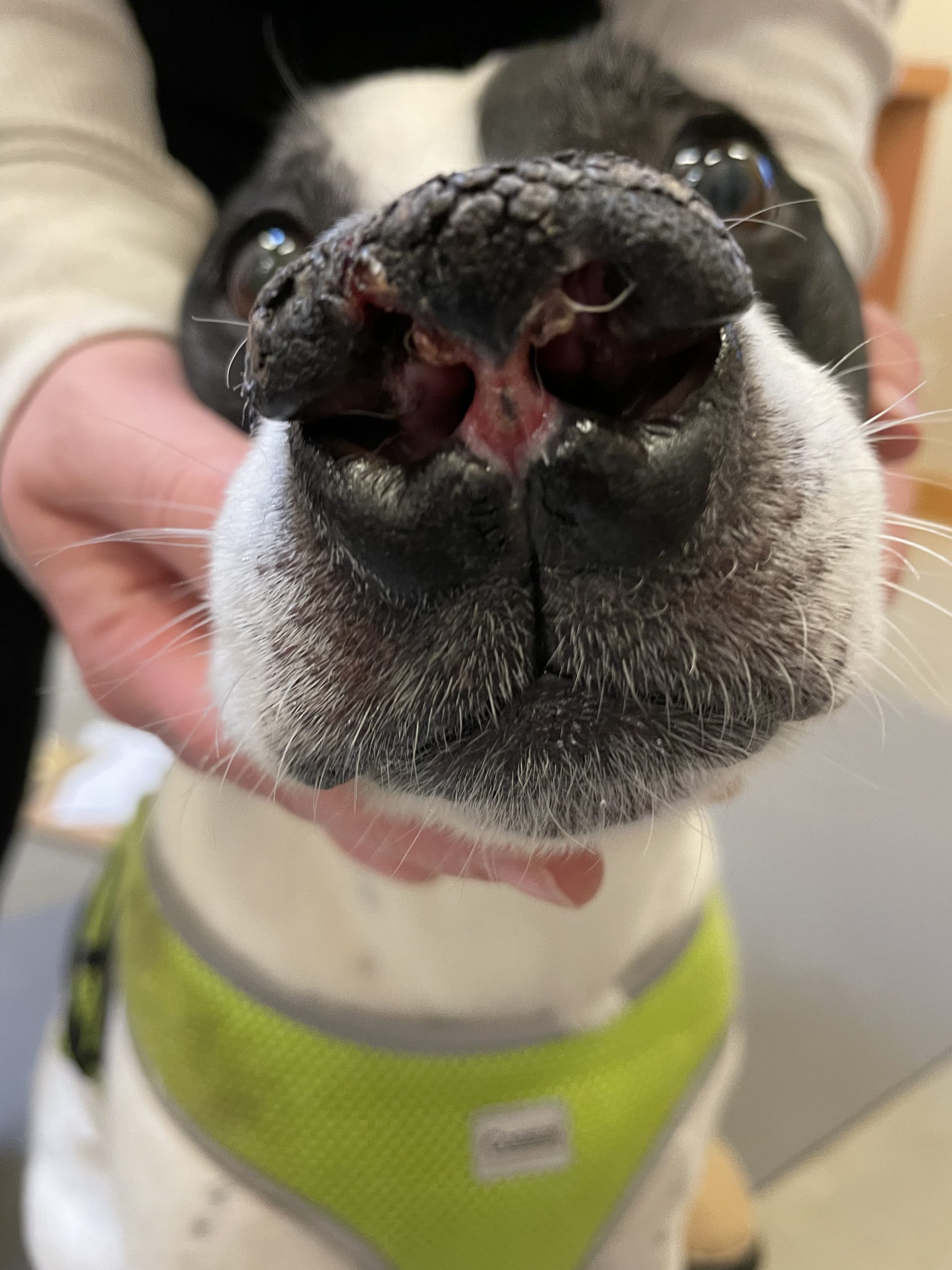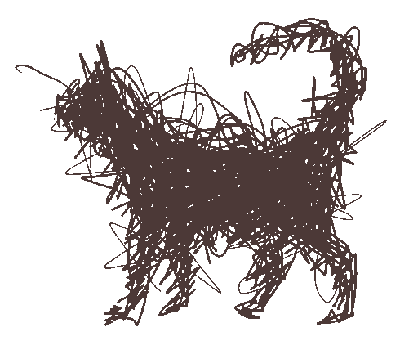Diagnostics
The issue is often right on the surface
Skin and ear diseases can manifest in various forms, but the good news is that many issues are right on the surface. This enables direct observation of lesions and allows for quick, often painless diagnostic tests. At PetDerm, our team is equipped to evaluate tests on-site in our laboratory, providing results within minutes instead of days. This rapid turnaround allows for swift and accurate decisions on the appropriate course of treatment.
During a routine examination, tests may encompass impression smear cytology, superficial or deep skin scrapes, trichography, fungal cultures, and in-house blood tests. Depending on the pet’s unique symptoms, a skin biopsy and dermatopathology reading may be suggested and scheduled.

How to book this service?
Please ask your family veterinarian for a referral. Send your veterinarian a referral request to get your initial consultation booked!
We understand you may be struggling to find the help you need for your special pet. We want to help so we created a pet owner self-referral process for a dermatology or internal medicine consultation.

Frequently Asked Questions
Cytology is a diagnostic test that is simple and easy to obtain from most pets. Cytology of the skin or ear is used to identify inflammation and the type of infection present. To perform a cytology test, a PetDerm nurse will use a swab, tape, or slide to collect samples from the ear, which will be examined under a microscope for diagnosis.
Blood and urine tests in animals offer insights into various body systems, including liver and kidney function, anemia, and thyroid function. These laboratory tests provide valuable internal information that may not be evident externally. Periodic blood and urine tests can even detect early disease processes before outward symptoms emerge. While urine testing (urinalysis) is not superior or inferior to blood testing, it complements it, offering a more comprehensive understanding when both are combined.
Yes, absolutely! Ringworm (dermatophytosis) can indeed be a contagious infection, and in certain instances, it can transfer from cats or dogs to their human companions. However, the likelihood of transmission varies depending on the specific type of infection, the areas affected on the pet, and the individual susceptibility of the person. Given that other infections may resemble ringworm, it is crucial to achieve an accurate diagnosis of dermatophytosis before initiating treatments for the pet or the pet owner.
Dermatophytosis, commonly known as ringworm, is a fungal infection affecting hair, superficial skin, and occasionally nails. It is caused by three fungal organisms: Microsporum canis, Microsporum gypseum, and Trichophyton mentagrophytes. Sources of infection include infected pets, rodents, contaminated environments, and sometimes the soil. While less common, dermatophytosis is contagious and zoonotic, potentially transmissible to humans. Diagnostic methods include fungal culture, PCR testing, skin biopsy, and, in some cases, identification of fungal spores in impression smear cytology. A woods lamp examination can heighten suspicion. Treatment requires thorough care, extending beyond clinical cure, with a repeated fungal culture to confirm complete resolution typically performed.
Trichogram, also known as trichography, involves the microscopic examination of hairs. In this procedure, hairs are plucked, placed in mineral oil, and examined under a microscope. When assessing hairs from an animal with skin or hair coat issues, a veterinary dermatologist can identify evidence of infection, trauma, or hair malformation. Additionally, this method may reveal parasites such as Demodex residing within the hair follicle.
Skin scrapes involve using a dulled scalpel blade to collect material from the skin surface for microscopic examination. These scrapes are crucial for detecting parasites, particularly Demodex mites, which cause inflammation, hair loss, scaling, and secondary infections.
Deep skin scrapes focus on identifying mites living within hair follicles. This requires a small area and leaves a superficial abrasion. Superficial skin scrapes cover a larger area, collecting surface crust and skin cells to identify Sarcoptes and other surface mites that cause inflammation and itching.
Detecting mites through skin scrapes can significantly impact treatment, leading to a faster resolution of skin issues and relief from discomfort.
Cytology is a less invasive test than biopsy. Cytology entails collecting material from a specific patient, often from the surface of the skin or other lesions. In contrast, a biopsy involves obtaining a small tissue piece from a diseased area, submitting it for processing, and having it examined by a histopathologist. Petderm’s Dermatologist Veterinarian conducts in-house cytology, providing results during your examination.
Cytology revolves around collecting material from a specific patient and examining it under a microscope. The accuracy of this process hinges on the nature of the disease or problem being assessed, the type of sample obtained, and most crucially, the experience of the observer. Notably, experienced dermatologist vets excel in reading cytology slides, enhancing the accuracy of diagnoses. For instance, while cytology is highly effective in diagnosing bacterial or yeast infections, it may not be the preferred diagnostic tool for identifying skin cancer.
Cytology, encompassing impression smear cytology and diagnostic cytology, is a non-invasive procedure involving the collection of samples from a patient for microscopic examination. Material is obtained using a cotton swab, tape, or other instruments, then examined under a microscope to provide valuable insights into specific issues. This process aims to uncover evidence of infections, types of inflammation, immune-mediated diseases, or neoplasia. Experienced veterinary dermatologists, including clinical pathologists at outside labs or in-house specialists, often perform cytology, ensuring accurate and detailed analyses of the obtained samples.
Cytology, whether in the form of impression smear cytology or diagnostic cytology, stands as a non-invasive and highly valuable method, particularly in the diagnosis and reassessment of skin and ear diseases. This technique involves acquiring patient samples for microscopic examination and furnishing crucial information and evidence for specific issues. In the realm of skin and ear diseases, cytology proves especially advantageous for diagnosing infections and can also play a role in the initial assessment of certain immune-mediated diseases and specific types of cancer.
Explore other services



